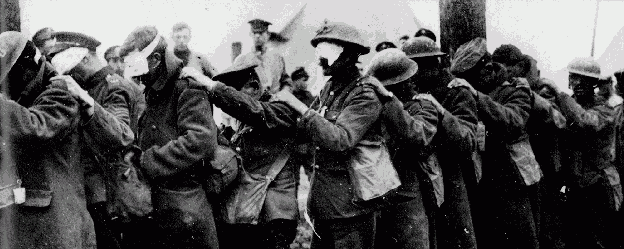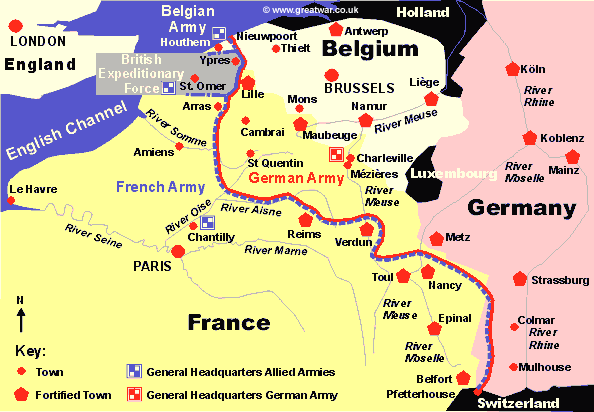Allies Focus on River Somme; Germans on Verdun.
Anything to Break the Stalemate
Special to The Great War Project
(26-29 January) Despite the terrible deadlock on both the Western and Eastern Fronts, war commanders for the Allies are busy planning a great offensive against the Germans and Austrians.
From the last month of December 1915, writes war historian John Keegan, the Allies’ thoughts “were concentrated on the great offensives they jointly planned to deliver in the west and east, offensives which they believed would, after eighteen months of stalemate in France and Belgium, a year of defeats in Poland, and six months of frustration in Italy, bring them decisive victories.”
Looking at the big picture of the war, from Belgium to the Middle East, the Allies have to make some hard choices. They decide that on the minor fronts – Greece, Egypt, and Iraq – they will not be reinforced.
“On the major fronts, by contrast,” writes Keegan, “the Russians, the Italians and the British and French bound themselves to mount attacks so timed as to prevent the Central Powers [Germany and Austria] from transferring reserves between theatres and with all the forces available to each army.”
The Allied forces believe they are ready for such offensives.
“The Allied forces had grown considerably since the beginning of trench warfare,” reports Keegan.
Take Italy. Although Italy is the “weakest of the major allies,” it has “succeeded by early 1916 in raising its number of infantry battalions from 560 to 693, according to Keegan. Italy pieces are similarly much more numerous. And the Italian army in the zone of combat “had grown in strength since 1915 from a million to a million and a half.”
Similarly, Russia “despite the terrible fatalities of 1914-1915 and the large loss of soldiers to captivity,” is on the way to fielding an army of two million. Russian industry is turning out a rapidly expanding number of artillery pieces, explosive shells, and rifles, not to mention output in other equipment, such as trucks, telephones, and aircraft.
“In France too,” reports Keegan, “there had been a war-industrial revolution, thanks in part to the mobilization of women for factory work.”
But France, given its population demographics, is not able to field an army of soldiers the size of Germany’s. Britain has to take up the slack.
Keegan reports “the major addition to the fighting strength of the Allies was British.” British civilians respond to the national appeal to volunteer in huge numbers.
“It was this enormous increment in the striking power of the Anglo-French concentration in France and Belgium,” observes Keegan, “that allowed he French and British to promise their allies…a continuation of their joint offensive efforts in 1916.
The British and French decide to concentrate their forces at the River Somme.
There are doubters. After all, writes Keegan, “plans made without allowance for the intentions of the enemy are liable to miscarry.”
“So it was to prove in 1916.”
As the Allies are focused on the Somme, the Germans are devising a vast punishment expedition of their own against a fortified French town called Verdun.




Thanks.